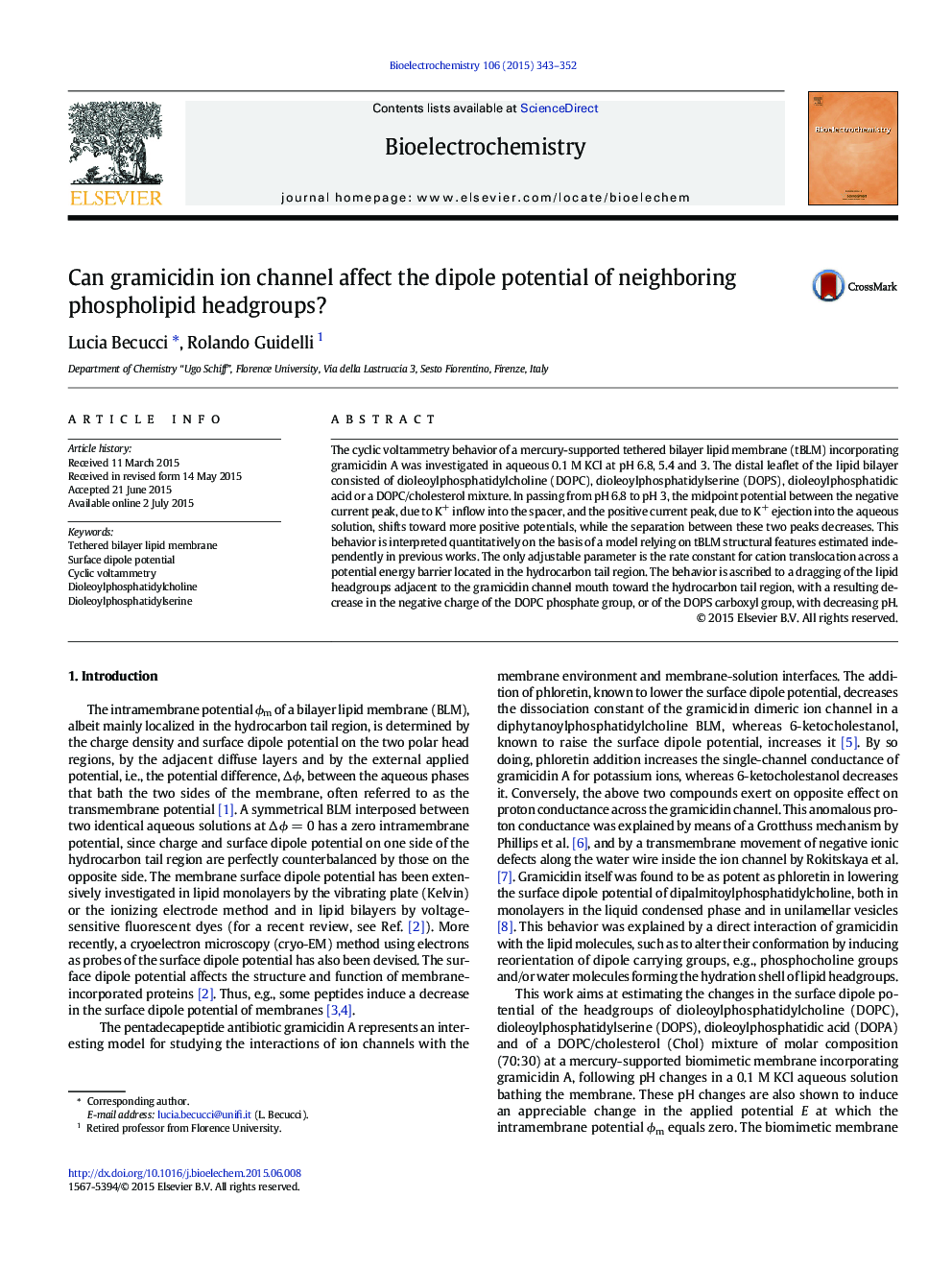| کد مقاله | کد نشریه | سال انتشار | مقاله انگلیسی | نسخه تمام متن |
|---|---|---|---|---|
| 1270744 | 972504 | 2015 | 10 صفحه PDF | دانلود رایگان |
• The cyclic voltammogram of the gramicidin ion channel depends strongly on pH.
• The ion channel mouth affects the dipole potential of adjacent lipid headgroups.
• Changes in dipole potential of lipid headgroups with varying pH are estimated.
• Voltammograms of ion channels in tethered bilayer lipid membranes are modeled.
The cyclic voltammetry behavior of a mercury-supported tethered bilayer lipid membrane (tBLM) incorporating gramicidin A was investigated in aqueous 0.1 M KCl at pH 6.8, 5.4 and 3. The distal leaflet of the lipid bilayer consisted of dioleoylphosphatidylcholine (DOPC), dioleoylphosphatidylserine (DOPS), dioleoylphosphatidic acid or a DOPC/cholesterol mixture. In passing from pH 6.8 to pH 3, the midpoint potential between the negative current peak, due to K+ inflow into the spacer, and the positive current peak, due to K+ ejection into the aqueous solution, shifts toward more positive potentials, while the separation between these two peaks decreases. This behavior is interpreted quantitatively on the basis of a model relying on tBLM structural features estimated independently in previous works. The only adjustable parameter is the rate constant for cation translocation across a potential energy barrier located in the hydrocarbon tail region. The behavior is ascribed to a dragging of the lipid headgroups adjacent to the gramicidin channel mouth toward the hydrocarbon tail region, with a resulting decrease in the negative charge of the DOPC phosphate group, or of the DOPS carboxyl group, with decreasing pH.
Figure optionsDownload as PowerPoint slide
Journal: Bioelectrochemistry - Volume 106, Part B, December 2015, Pages 343–352
